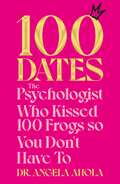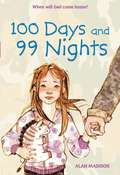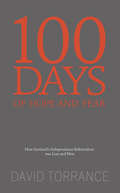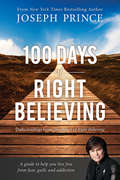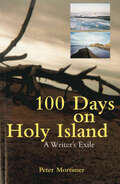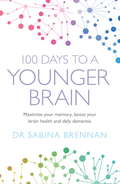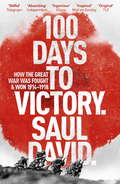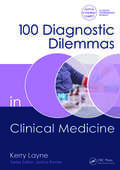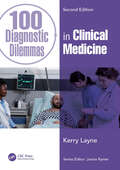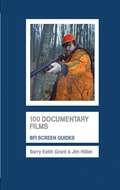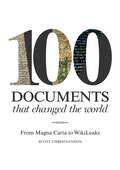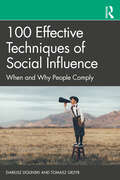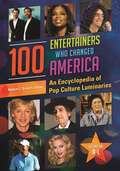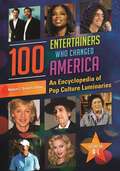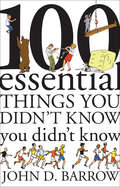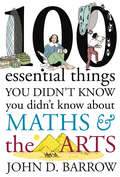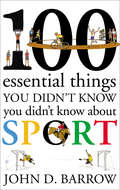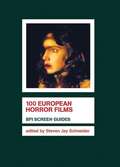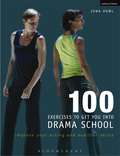- Table View
- List View
100 Dates: The Psychologist Who Kissed 100 Frogs So You Don't Have To
by Dr Angela AholaSearching for a fresh approach to dating? Look no further . . .Modern dating is a numbers game, with limitless options only ever a swipe away. But whether you're looking for something casual or searching for true romance, sifting through countless profiles only to endure a dreadful date can be exhausting. How do you stand out from the crowd and find the person you're looking for?Enter Psychologist Dr Angela Ahola. When she found herself single again after a long relationship, Angela decided to throw herself headlong into the unfamiliar world of online dating. Armed with her expertise in studying human behaviour, she embarked on an experiment with herself as the test subject: she went on one hundred different dates to learn as much as she could about what makes a successful encounter - and what doesn't.Backed up by the latest science on personality, relationships and dating, 100 Dates is the ultimate dating handbook. Including advice on everything from figuring out why you want to date through to setting up your profile and finding the right person, Dr Angela is the perfect guide through the thorny wilderness of dating.
100 Days and 99 Nights
by Alan MadisonDad says because of the army he stood shoulder to shoulder with polar bears and watched the sun rise over the frozen fields of Alaska, which sounds really exciting. And because of the Army he slept in sludge, shoulder to shoulder with snakes and watched the sun set over the swamps of Alabama -- which does not. In a timely, but not politically charged way, author Alan Madison looks at the way a family copes with having a parent away on a 100 day, 99 night military tour of duty through the eyes of the very loveable Esmerelda (Esme) Swishback McCarthur. Esme wants to be good while her dad is away. In fact, she feels like it's her duty to be good. But being good can be hard, especially if you have a little brother like Ike. By following Esme's story, as she awaits her father's return, readers will see how heroism can translate to every member of a family. Aside from the military families that this book serves, readers who wonder what it would be like if their mother, father, brother, or sister was sent away will relate to Esme's quiet strength and candor and will understand her worry about what could happen. This story has the potential to speak to readers on a personal level and to turn a concept that seems so hard to grasp--war--into one that feels much more personal.
100 Days of Hope and Fear: How Scotland's Referendum was Lost and Won
by David TorranceWas it simply a victory for fear over hope?How did the Better Together campaign come so close to losing it?How did the Yes campaign come so close to winning it?What can the people of Scotland - and other aspirant nations - learn from this seismic democratic event? Scotland’s independence referendum on 18 September 2014 was the most significant ballot in Scotland’s history. The 100 days up to 18 September was the official campaign period and the world’s media was watching. David Torrance was there throughout, in front of the cameras, on the radio, in the newspapers, at the debates and gatherings, privy to some of the behind-the-scenes manoeuvrings.A passionate federalist at heart, described disparagingly by the outgoing First Minister as ‘Tory-leaning’, Torrance made a valiant attempt to remain ‘professionally neutral’ throughout. His commentary and analysis as the campaign went through its many twists and turns was always insightful, if not always popular.'Reading this diary back during the editing process it was clear that, like (Nate) Silver (the US polling guru whose view was that the Yes campaign had virtually no chance of victory), I got a lot of things wrong (including the likely margin of victory) but also many things broadly correct. At least I can plead, as journalists often do, that I was probably right at the time.'His diary is deliciously gossipy, entertainingly indiscreet, and a must-read for political geeks as well as those who want to see what goes on behind the scenes of Scotland's politics and media.STEPHEN DAISLEY, STVDavid Torrance has emerged as one of the campaign's most important commentators... [his] unauthorised biography of Alex Salmond, Against the Odds, has become the prescribed text for the flying columns of English-based and overseas journalists converging on Scotland in this our hour of destiny.KEVIN McKENNA, Scottish Review of BooksTorrance has secured himself a prominent position in the referendum debate, partly through the strategic use of nice jumpers and expertly crafted hair, but largely on merit ... [he deserves] far better than the lazy impossibilist critiques to which [his federalist] proposals have been subjected.RORY SCOTHORNE on Britain RebootedF*** sake... David Torrance on again. Is the greasy weasel never aff the telly?CALUM FINDLAY [on Twitter]
100 Days of Right Believing: Daily Readings from The Power of Right Believing
by Joseph PrinceWhat you believe is everything! Break free from bondages and live a life of victory through inspiring bite-sized teachings that will help you develop highly effective habits for right believing. Each daily experience includes: Today's Scripture: A scripture to meditate on to recalibrate your mind and believe right about God's heart and plans for you. Today's Excerpt: A key truth about right believing that ministers and delivers God's transforming grace to you. Today's Thought: An uplifting, liberating, and powerful thought for the day.Today's Reflection: A place to journal your thoughts and reflections.Today's Prayer: A simple but powerful prayer to help you express your heart to your heavenly Father.
100 Days of Right Believing: Daily Readings from The Power of Right Believing
by Joseph PrinceWhat you believe is everything!Break free from bondages and live a life of victory through inspiring bite-sized teachings that will help you develop highly effective habits for right believing.Each daily experience includes:Today's Scripture: A scripture to meditate on to recalibrate your mind and believe right about God's heart and plans for you. Today's Excerpt: A key truth about right believing that ministers and delivers God's transforming grace to you. Today's Thought: An uplifting, liberating, and powerful thought for the day.Today's Reflection: A place to journal your thoughts and reflections.Today's Prayer: A simple but powerful prayer to help you express your heart to your heavenly Father.
100 Days On Holy Island: A Writer's Exile
by Peter MortimerIt was the worst winter in a decade, the winter of foot-and-mouth, when island power cuts ran for up to 72 hours - and two days before Peter Mortimer's planned departure, his father died.100 DAYS ON HOLY ISLAND is a quirky and often moving account of one man's self-imposed exile to a remote island off the coast of North-east England. Eschewing the usual historical or religious portrayal, Mortimer gives a vivid, humourous and often dramatic account of a confirmed urbanite in a small, tight-knit community cut off twice daily by the tides. Throwing himself into island life, he explores the landscape, people and myths that surround this remote `cradle of Chrisianity'. All of Mortimer's experiences within this unique island community are depicted with warmth and humour. The bleak winter scenery and idiosyncrasies of the island's inhabitants are described with an insight and understanding that could only have been achieved from personal experience. He helped in the local school, worked on the land, was the first person to be voluntarily cut off in the island refuge box and spent three tides isolated on the exposed outcrop, St Cuthbert's Island. The 100 days changed him - and probably changed the island. 100 DAYS ON HOLY ISLAND is a personal homage to the island and a remarkable account of a micro-society unique in modern Britain.
100 Days to a Younger Brain: Maximise your memory, boost your brain health and defy dementia
by Dr Sabina BrennanInvesting in brain health will cost you nothing but time and effort - the brain-healthy recommendations in this book can all be followed for free! The steps are simple to follow and within your control so can be integrated into daily life with ease for the next 100 days.The aim of living a brain healthy life is not just to reduce the risk of dementia and other serious health issues but also to improve the quality of your life and brain performance NOW. Sabina provides all the essential information you need to empower you to make informed choices everyday about your sleeping, eating and lifestyle habits that will benefit all aspects of your life from work to relationships and achieving your personal goals. This motivating book proves that you don't need to understand complicated neuroscience in order to look after your brain, inspiring you to do at least one small thing every day to radically improve your brain health.
100 Days to Victory: How The First World War Was Fought And Won
by Saul DavidSaul David's 100 DAYS TO VICTORY is a totally original, utterly engaging account of the Great War - the first book to tell the story of the 'war to end all wars' through the events of one hundred key days between 1914 and 1918.100 DAYS TO VICTORY is a 360 degree portrait of a global conflict that stretched east from the shores of Britain to the marshes of Iraq, and south from the forests of Russia to the bush of German South East Africa. Throughout his gripping narrative we hear the voices of men and women both eminent and ordinary, some who were spectators on the Home Front, others - including Saul David's own family - who were deeply embroiled in epic battles that changed the world forever. 100 DAYS TO VICTORY is the work of a great historian and supreme story teller. Most importantly, it is also an enthralling tribute to a generation whose sacrifice should never be forgotten.
100 Diagnostic Dilemmas in Clinical Medicine (100 Cases)
by Kerry Layne100 Diagnostic Dilemmas in Clinical Medicine presents 100 real-life scenarios seen in the hospital and community setting. A succinct summary of the patient's history, examination and any initial investigations is followed by a detailed consideration of the diagnosis and management of each case, in the short, medium and, where appropriate, long-term. Making speedy and appropriate clinical decisions, and choosing the best course of action to take as a result, is one of the most important and challenging parts of training to become a doctor. These true-to-life cases will teach students and junior doctors to recognize important medical conditions, and to develop their diagnostic and management skills.
100 Diagnostic Dilemmas in Clinical Medicine (100 Cases)
by Kerry Layne100 Diagnostic Dilemmas in Clinical Medicine presents 100 real-life scenarios seen in the hospital and community setting. A succinct summary of the patient's history, examination and any initial investigations is followed by a detailed consideration of the diagnosis and management of each case, in the short, medium and, where appropriate, long-term. Making speedy and appropriate clinical decisions, and choosing the best course of action to take as a result, is one of the most important and challenging parts of training to become a doctor. These true-to-life cases will teach students and junior doctors to recognize important medical conditions, and to develop their diagnostic and management skills.
100 Diagnostic Dilemmas in Clinical Medicine (100 Cases)
by Kerry LayneA 57-year-old man presented to the emergency department complaining of a worsening cough. The cough had been present for approximately two weeks and was productive of green sputum. The patient had seen his general practitioner one week earlier and taken a course of amoxicillin for a presumed lower respiratory tract infection with no improvement of symptoms. He was febrile, experiencing frequent headaches and a feeling of general malaise, and had been unable to eat solid food for the last 48 hours due to facial pain on chewing. You have been asked to assess him and devise a management plan… 100 Diagnostic Dilemmas in Clinical Medicine presents 100 real-life scenarios seen in the hospital and community setting. A succinct summary of the patient's history, examination and any initial investigations is followed by a detailed consideration of the diagnosis and management of each case, in the short, medium and, where appropriate, long term. Making speedy and appropriate clinical decisions, and choosing the best course of action to take as a result, is one of the most important and challenging parts of training to become a doctor. These extended true-to-life cases will teach students and junior doctors to recognize important medical conditions and to develop their diagnostic and management skills. Key features: Extended case studies presented in an easy-to-read format, presenting patient history, examination, investigations and differential diagnosis Readers are guided through the clinician's sequence of thoughts and actions as they consider how to manage the case appropriately in the short, medium and, if necessary, long term Plentiful illustrations supplement the text A broad range of conditions is covered, from acquired haemophilia to intestinal tuberculosis
100 Diagnostic Dilemmas in Clinical Medicine (100 Cases)
by Kerry LayneA 57-year-old man presented to the emergency department complaining of a worsening cough. The cough had been present for approximately two weeks and was productive of green sputum. The patient had seen his general practitioner one week earlier and taken a course of amoxicillin for a presumed lower respiratory tract infection with no improvement of symptoms. He was febrile, experiencing frequent headaches and a feeling of general malaise, and had been unable to eat solid food for the last 48 hours due to facial pain on chewing. You have been asked to assess him and devise a management plan… 100 Diagnostic Dilemmas in Clinical Medicine presents 100 real-life scenarios seen in the hospital and community setting. A succinct summary of the patient's history, examination and any initial investigations is followed by a detailed consideration of the diagnosis and management of each case, in the short, medium and, where appropriate, long term. Making speedy and appropriate clinical decisions, and choosing the best course of action to take as a result, is one of the most important and challenging parts of training to become a doctor. These extended true-to-life cases will teach students and junior doctors to recognize important medical conditions and to develop their diagnostic and management skills. Key features: Extended case studies presented in an easy-to-read format, presenting patient history, examination, investigations and differential diagnosis Readers are guided through the clinician's sequence of thoughts and actions as they consider how to manage the case appropriately in the short, medium and, if necessary, long term Plentiful illustrations supplement the text A broad range of conditions is covered, from acquired haemophilia to intestinal tuberculosis
100 Documentary Films (Screen Guides)
by Barry Keith Grant Jim HillierDocumentary films constitute a major part of film history. Cinema's origins lie, arguably, more in non-fiction than fiction, and documentary represents the other - often submerged and barely visible - 'half' of cinema history. Historically, documentary cinema has always been an important point of reference for fiction cinema, and the two have often overlapped. Over the last two decades, documentary cinema has enjoyed a revival in critical and commercial success.100 Documentary Films is the first book to offer concise and authoritative individual critical commentaries on some of the key documentary films - from the Lumière brothers and the beginnings of cinema through to recent films such as Bowling for Columbine and When the Levees Broke - and is global in perspective. Many different types of documentary are discussed, as well as films by major documentary directors, including Robert Flaherty, Humphrey Jennings, Jean Rouch, Dziga Vertov, Errol Morris, Nick Broomfield and Michael Moore. Each entry provides concise critical analysis, while frequent cross reference to other films featured helps to place films in their historical and aesthetic contexts.Barry Keith Grant is Professor of Film Studies and Popular Culture at Brock University, Ontario, Canada. He is the author of Film Genre: From Iconography to Ideology (2007), Voyages of Discovery: The Cinema of Frederick Wiseman (1992) and co-author, with Steve Blandford and Jim Hillier, of The Film Studies Dictionary (2001).Jim Hillier is Visiting Lecturer in Film at the University of Reading. He is the author of The New Hollywood (1993), the co-author of The Film Studies Dictionary (2001) and, with Alan Lovell, of Studies in Documentary (1972). His edited books include American Independent Cinema (2001) and two volumes of the English translation of the selected Cahiers du cinema (1985, 1986).
100 Documentary Films (Screen Guides)
by Barry Keith Grant Jim HillierDocumentary films constitute a major part of film history. Cinema's origins lie, arguably, more in non-fiction than fiction, and documentary represents the other - often submerged and barely visible - 'half' of cinema history. Historically, documentary cinema has always been an important point of reference for fiction cinema, and the two have often overlapped. Over the last two decades, documentary cinema has enjoyed a revival in critical and commercial success.100 Documentary Films is the first book to offer concise and authoritative individual critical commentaries on some of the key documentary films - from the Lumière brothers and the beginnings of cinema through to recent films such as Bowling for Columbine and When the Levees Broke - and is global in perspective. Many different types of documentary are discussed, as well as films by major documentary directors, including Robert Flaherty, Humphrey Jennings, Jean Rouch, Dziga Vertov, Errol Morris, Nick Broomfield and Michael Moore. Each entry provides concise critical analysis, while frequent cross reference to other films featured helps to place films in their historical and aesthetic contexts.Barry Keith Grant is Professor of Film Studies and Popular Culture at Brock University, Ontario, Canada. He is the author of Film Genre: From Iconography to Ideology (2007), Voyages of Discovery: The Cinema of Frederick Wiseman (1992) and co-author, with Steve Blandford and Jim Hillier, of The Film Studies Dictionary (2001).Jim Hillier is Visiting Lecturer in Film at the University of Reading. He is the author of The New Hollywood (1993), the co-author of The Film Studies Dictionary (2001) and, with Alan Lovell, of Studies in Documentary (1972). His edited books include American Independent Cinema (2001) and two volumes of the English translation of the selected Cahiers du cinema (1985, 1986).
100 Effective Techniques of Social Influence: When and Why People Comply
by Dariusz Dolinski Tomasz Grzyb100 Effective Techniques of Social Influence provides a revolutionary look into the effectiveness of many techniques of social influence, providing an overview of the ways in which people use techniques to persuade others to meet various requests, suggestions, and commands. For each technique, the authors explore the idea behind it, what empirical research says about it, and what the psychological mechanism behind its effectiveness is, aka, why it works. The techniques included span across multiple areas in people’s everyday lives, ranging from business negotiations, managements, marketing, and close relationships, to people’s behavior in public as well as in their private sphere. Covering research from the 1970s to the present day, the book describes techniques of social influence with the purpose of provoking certain behaviors, such as convincing an individual to donate to a charity or purchase a certain product. By exclusively focusing on techniques influencing human behaviors, rather than beliefs, biases, or emotions, the authors show how humans can be reliably convinced to behave in a certain way in a huge range of situations and contexts. Rather than being based on anecdotal evidence or legends of famous people, the authors have only included techniques that have been proven to be effective through scientific research. With each technique described in an engaging manner, this is ideal reading for students and academics in fields such as social psychology, leadership, marketing, sociology, management, and communication. It will also appeal to professionals who need to influence others, and any readers who desire a better and more contemporary understanding of how people interact and influence others on a daily basis.
100 Effective Techniques of Social Influence: When and Why People Comply
by Dariusz Dolinski Tomasz Grzyb100 Effective Techniques of Social Influence provides a revolutionary look into the effectiveness of many techniques of social influence, providing an overview of the ways in which people use techniques to persuade others to meet various requests, suggestions, and commands. For each technique, the authors explore the idea behind it, what empirical research says about it, and what the psychological mechanism behind its effectiveness is, aka, why it works. The techniques included span across multiple areas in people’s everyday lives, ranging from business negotiations, managements, marketing, and close relationships, to people’s behavior in public as well as in their private sphere. Covering research from the 1970s to the present day, the book describes techniques of social influence with the purpose of provoking certain behaviors, such as convincing an individual to donate to a charity or purchase a certain product. By exclusively focusing on techniques influencing human behaviors, rather than beliefs, biases, or emotions, the authors show how humans can be reliably convinced to behave in a certain way in a huge range of situations and contexts. Rather than being based on anecdotal evidence or legends of famous people, the authors have only included techniques that have been proven to be effective through scientific research. With each technique described in an engaging manner, this is ideal reading for students and academics in fields such as social psychology, leadership, marketing, sociology, management, and communication. It will also appeal to professionals who need to influence others, and any readers who desire a better and more contemporary understanding of how people interact and influence others on a daily basis.
100 Entertainers Who Changed America [2 volumes]: An Encyclopedia of Pop Culture Luminaries [2 volumes]
by Robert C. SickelsThis fascinating and thought-provoking read challenges readers to consider entertainers and entertainment in new ways, and highlights figures from outside the worlds of film, television, and music as influential "pop stars."Comprising approximately 100 entries from more than 50 contributors from a variety of fields, this book covers a wide historical swath of entertainment figures chosen primarily for their lasting influence on American popular culture, not their popularity. The result is a unique collection that spotlights a vastly different array of figures than would normally be included in a collection of this nature—and appeals to readers ranging from high school students to professionals researching specific entertainers.Each subject individual's influence on popular culture is analyzed from the context of his or her time to the present in a lively and engaging way and through a variety of intellectual approaches. Many entries examine commonly discussed figures' influence on popular culture in ways not normally seen—for example, the widespread appeal of Woody Allen's essay collections to other comedians; or the effect of cinematic adaptations of Tennessee Williams' plays in breaking down Hollywood censorship.
100 Entertainers Who Changed America [2 volumes]: An Encyclopedia of Pop Culture Luminaries [2 volumes]
by Robert C. SickelsThis fascinating and thought-provoking read challenges readers to consider entertainers and entertainment in new ways, and highlights figures from outside the worlds of film, television, and music as influential "pop stars."Comprising approximately 100 entries from more than 50 contributors from a variety of fields, this book covers a wide historical swath of entertainment figures chosen primarily for their lasting influence on American popular culture, not their popularity. The result is a unique collection that spotlights a vastly different array of figures than would normally be included in a collection of this nature—and appeals to readers ranging from high school students to professionals researching specific entertainers.Each subject individual's influence on popular culture is analyzed from the context of his or her time to the present in a lively and engaging way and through a variety of intellectual approaches. Many entries examine commonly discussed figures' influence on popular culture in ways not normally seen—for example, the widespread appeal of Woody Allen's essay collections to other comedians; or the effect of cinematic adaptations of Tennessee Williams' plays in breaking down Hollywood censorship.
100 Essential Things You Didn't Know You Didn't Know: Math Explains Your World
by John D. Barrow'If people do not believe that mathematics is simple, it is only because they do not realize how complicated life is.' John von NeumannMathematics can tell you things about the world that can't be learned in any other way. This hugely informative and wonderfully entertaining Brain Shot answers a few essential questions about existence. It unravels the knotty, clarifies the conundrums and sheds light into dark corners. From winning the lottery, financial investment with Time Travelers and the weirdest football match ever to Sherlock Holmes, Elections, game theory, drunks, packing for your holiday and the madness of crowds; from chaos to infinity and everything in between, Essential Things You Didn't Know You Didn't Know has all the answers!BRAIN SHOTS: The byte-sized guide to all the things you didn't know you didn't know...
100 Essential Things You Didn't Know You Didn't Know About Maths and the Arts
by John D. BarrowWhat can maths tell us about art and design?Professor John D. Barrow has all the answers. In 100 Essential Things You Didn't Know You Didn't Know About Maths and the Arts, he shows us that mathematics and the arts are not so far removed from each other. He takes us on a 100-step tour, guiding us through art forms as various as sculpture, literature, architecture and dance, and reveals what maths can tell us about the mysteries of the worlds of art and design.We find out why diamonds sparkle, how many words Shakespeare knew and why the shower is the best place to sing. We discover why an egg is egg-shaped, why Charles Dickens crusaded against maths and how a soprano can shatter a wine glass without touching it... Enlivening the everyday with a new way of looking at the world, this book will enrich your understanding of the maths and art that surround us in our day-to-day lives.
100 Essential Things You Didn't Know You Didn't Know About Sport
by John D. BarrowWhat can maths tell us about sports? 100 Essential Things You Didn't Know You Didn't Know About Sport sheds light on the mysteries of running, jumping, swimming and points scoring across the whole sporting spectrum. Whether you are a competitor striving to go faster or higher, or an armchair enthusiast wanting to understand more, this is a fascinating read with one hundred short pieces that range across a wide number of sports. Find out:* Why high-jumpers use the Fosbury Flop,* How fast Usain Bolt can ultimately run and how he could break his records without running any faster,* Whether there is a limit to human performance,* Who the strongest man or woman is, pound for pound,* Why there are so many different scoring systems in sport,* If a 100-kilogram mass weighs more in London than it does in Singapore,* What the best strategy for taking football penalties is,* What the effect of those banned skin-tight swimsuits are,* Why golf balls are dimpled,* And last, but not least, why does the bounce of a Superball seem to defy Newton's laws of motion.Written for anyone interested in sport or simple maths, this book will enrich your understanding of sport and enliven your appreciation of maths.
100 European Horror Films (Screen Guides)
by Steven Jay SchneiderFrom bloodsucking schoolgirls to flesh-eating zombies, and from psychopathic killers to beasts from hell, '100 European Horror Films' provides a lively and illuminating guide to a hundred key horror movies from the 1920s to the present day. Alongside films from countries particularly associated with horror production - notably Germany, Italy, and Spain and movies by key horror filmmakers such as Mario Bava, Dario Argento, and Lucio Fulci, '100 European Horror Films' also includes films from countries as diverse as Denmark, Belgium, and the Soviet Union, and filmmakers such as Bergman, Polanski and Claire Denis, more commonly associated with art cinema. The book features entries representing key horror subgenres such as the Italian 'giallo' thrillers of the late 60s and 70s, psychological thrillers, and zombie, cannibal, and vampire movies. Each entry includes a plot synopsis, major credits, and a commentary on the film's significance, together with its production and exhibition history. Films covered in the book include early classics such as Paul Wegener's 'The Golem,' Robert Wiene's 'The Cabinet of Dr. Caligari,' and 'Murnau's Nosferatu'; 70s horror favorites such as 'Daughters of Darkness, The Beast,' and 'Suspiria'; and notable recent releases such as 'The Devil's Backbone, Malefique,' and 'The Vanishing.'
100 European Horror Films (Screen Guides)
From bloodsucking schoolgirls to flesh-eating zombies, and from psychopathic killers to beasts from hell, '100 European Horror Films' provides a lively and illuminating guide to a hundred key horror movies from the 1920s to the present day. Alongside films from countries particularly associated with horror production - notably Germany, Italy, and Spain and movies by key horror filmmakers such as Mario Bava, Dario Argento, and Lucio Fulci, '100 European Horror Films' also includes films from countries as diverse as Denmark, Belgium, and the Soviet Union, and filmmakers such as Bergman, Polanski and Claire Denis, more commonly associated with art cinema. The book features entries representing key horror subgenres such as the Italian 'giallo' thrillers of the late 60s and 70s, psychological thrillers, and zombie, cannibal, and vampire movies. Each entry includes a plot synopsis, major credits, and a commentary on the film's significance, together with its production and exhibition history. Films covered in the book include early classics such as Paul Wegener's 'The Golem,' Robert Wiene's 'The Cabinet of Dr. Caligari,' and 'Murnau's Nosferatu'; 70s horror favorites such as 'Daughters of Darkness, The Beast,' and 'Suspiria'; and notable recent releases such as 'The Devil's Backbone, Malefique,' and 'The Vanishing.'
100 Exercises to Get You Into Drama School: Improve your acting and audition skills
by Jona Howl'The book's main asset is its clarity and accessibility, it relates to its readers in a helpful and clear way.' John Gillett, actor trainer and author of Acting on ImpulseCompetition for drama school is fierce, thousands apply every year for only a few places. Preparing well for your audition is key.This book gives drama-school hopefuls the inside track only previously available via professional coaches. It gives clear advice on improving acting skills through effective exercises in which voice, movement, text and character come together with a single aim: to pass that elusive audition and get your career off the ground.Content and acting workshops include: posture, movement, the Alexander Technique, voice, how to work with the text, how to prepare for the Big Day, how to behave on the day. A resource section for places of study is also included.With specific exercises designed by a top London drama school coach, this book will help you think and feel like an actor. Get into training for auditions in film, TV or theatre today!
